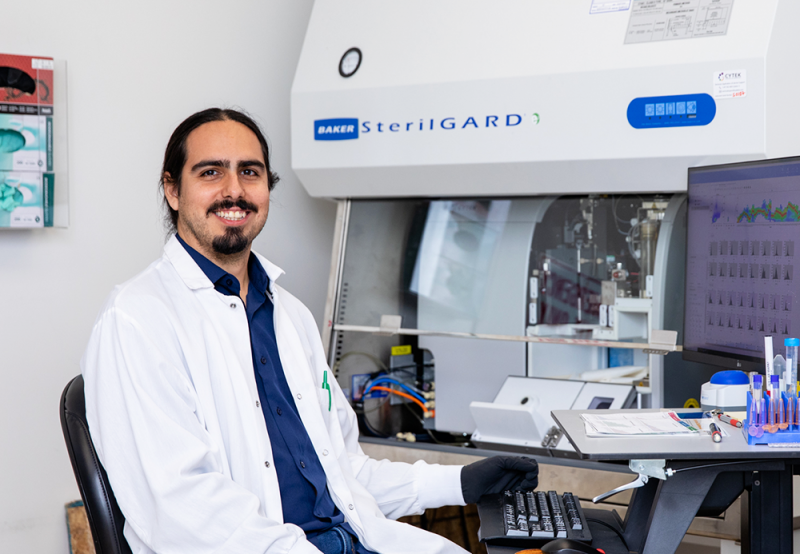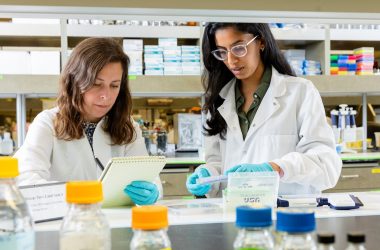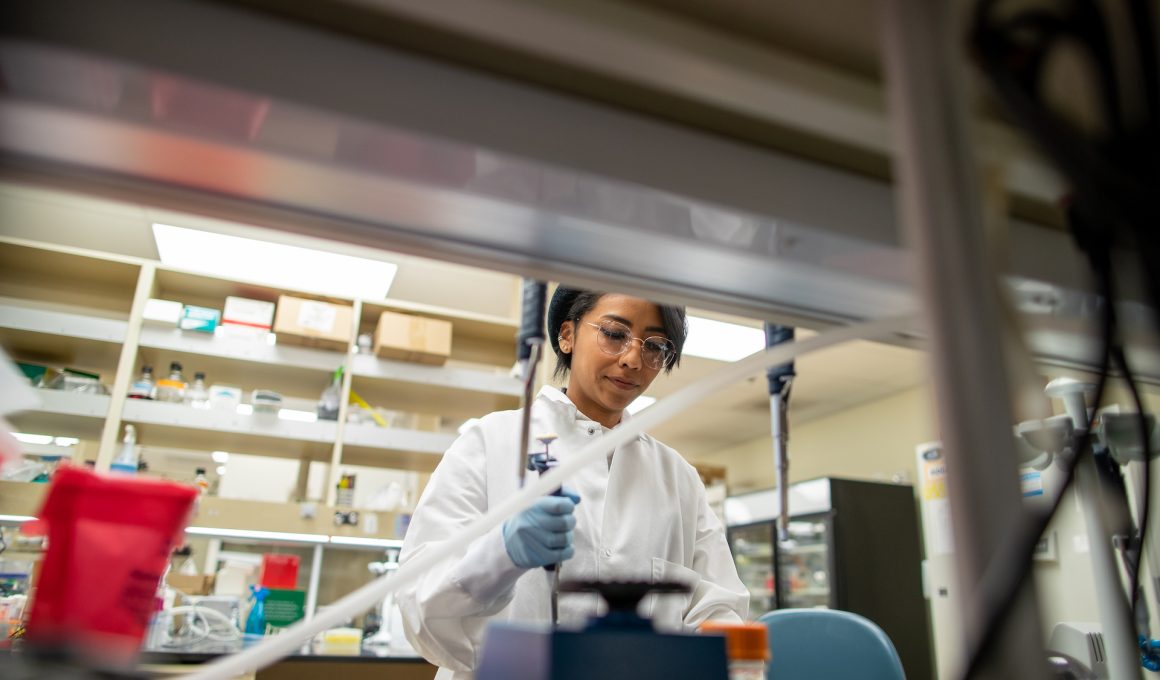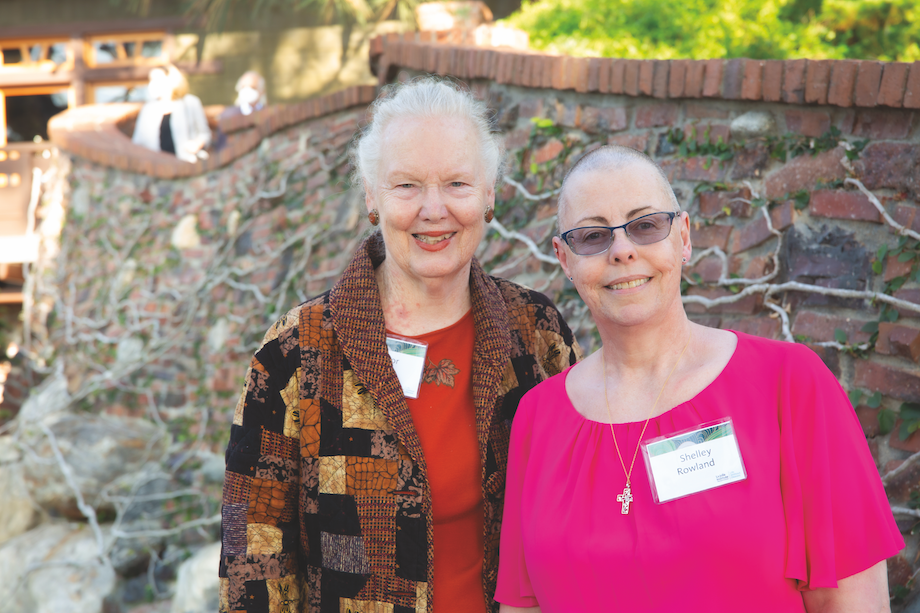Immunologist Gabriel Ascui-Gac began his career in a backyard shed. At around age 10, Ascui-Gac and his friends were desperate for a place to experiment with electronics, so they set up a small lab in his backyard where they could tinker. They built a radio from scratch and then engineered a series of pumps so they could have running water in the shed.
“I have very geeky friends,” says Ascui-Gac.
His interests shifted from electronics to biology, and he graduated with a bachelor’s degree in molecular biotechnology from the University of Chile. He’s still an engineer at heart. “I’m interested in systems biology, which is how things work,” says Ascui-Gac.
For example, in his first few years in college, Ascui-Gac was drawn to the idea of mimicking a system already in nature.
“There’s this sea slug that eats plants and then it keeps the chloroplasts [the organ in plant cells that turns carbon dioxide into oxygen] so it doesn’t need to breathe. It makes its own oxygen,” says Ascui-Gac. He wondered if humans could someday harness a similar system for times when oxygen is scarce—maybe during space travel.
If slug-astronaut technology sounds complicated, it doesn’t hold a candle to the system Ascui-Gac finally chose to investigate: the human body. One human cell contains more proteins than there are people in Manhattan. Then there are trillions of cells in the body, and scientists keep discovering more and more cell types.
“Immunology is involved in every type of human disease, so that’s why I got interested in it,” says Ascui-Gac. “I want to help people.”
Today, Ascui-Gac is a Ph.D. candidate at UC San Diego and works in the laboratory of La Jolla Institute for Immunology (LJI) Professor Mitchell Kronenberg, Ph.D., where he studies how immune cells defend the lungs. “Lungs are in constant contact with potential pathogens from our environment,” he says. “So it’s important for the resident immune cells of the lungs to have a very rapid response.”
In recent years, scientists have harnessed tools such as single-cell RNA sequencing to discover many important new T cells subsets. One fascinating—though puzzling—group are mucosal-associated invariant T (MAIT) cells. MAIT cells patrol mucosal membranes, the thin barriers that line vulnerable tissues such as the airways and the bowel.
To Ascui-Gac, MAIT cells are interesting because they don’t behave the way T cells are supposed to. Scientists tend to think of T cells as specialists. As part of the “adaptive” immune system, T cells are meant to respond to specific markers, called antigens, related to infections, cancers, or dangerous inflammation.
Each T cell can respond to just one antigen, just one tiny marker on one specific threat.
MAIT cells act more like the multi-purpose cells of the “innate” immune system. MAIT cells can react to many pathogens by detecting a common antigen derived from bacterial degradation of vitamin B2, a molecule that can’t be metabolized by mammals. MAIT cells can also recruit other types of innate immune cells, such as neutrophils, to fight infection. MAIT cells can also respond to new infections better if they have been previously exposed to this common antigen, making them similar to the memory T cells of the adaptive immune system.
“We think that there is some sort of innate memory,” says Ascui-Gac. There’s a lot more work to be done to understand how MAIT cells might remember past threats.
To find these answers, Ascui-Gac needs to unravel an entirely new system within the already dazzling complexity of the immune system. He hopes this research could one day prove important in developing cell-based therapies for lung diseases such as pneumonia and tuberculosis. Researchers may also search for ways to boost this innate immunity to enhance future vaccines.
In an unusual move for a graduate student, Ascui-Gac has already won financial support for his work. In 2021, he became one of the first two UC San Diego graduate students to be named an ARCS (Achievement Rewards for College Scientists) Scholar while working at LJI. This honor, awarded by the ARCS San Diego chapter, comes with $10,000 in funding over two semesters.
“The ARCS Award money has been really helpful for me,” says Ascui-Gac. “It’s not only allowed me to go to different conferences, I’ve also gotten to know key people who I’ve started collaborating with.”
Ascui-Gac’s new collaborations include a project to work with a new model of lung infection, one that will allow him to get a more accurate look at what MAIT cells are doing in lung tissue.
Ascui-Gac also recently published the first evidence that a gene called Ramp3 is important for immune cell function and host protection, especially against bacterial infections in the lungs—and that the RAMP3 protein can influence innate-like T cell mediated immune function. This publication was a major accomplishment, and Ascui-Gac credits Dr. Kronenberg’s encouragement.
“Working in science is difficult, but once you have a good environment and a good mentor, it makes everything easier,” says Ascui-Gac. “That would be my advice for anyone going into science—to have good people around you.”
Ascui-Gac is looking forward to bringing his expertise back to Chile someday soon. He hopes to find a faculty position and mentor the next generation of tinkerers.
Why we’re teeming with T cells
By taking a close look at the lungs, Ascui-Gac has helped shed light on a fascinating group of T cells, called MAIT cells, which scientists might be able to exploit to improve vaccine protection or cell therapies.
Immunologists got their first look at T cells back in the late 1960s. At the time, researchers thought T cells mainly helped B cells do their job. Over the decades, scientists have uncovered more and more kinds of T cells in the body. Many do help B cells, but others are dedicated to killing infected cells (CD8+ T cells) or preserving immune memory of past infections (memory T cells). Some T cells even patrol the body to make sure those killer T cells don’t trigger harmful inflammation (regulatory T cells).
What these T cells have in common is that they are all part of the “adaptive” immune system, which means they are known as specialists. Your body could make up to a billion T cells, and each one could respond to a completely different molecular marker of disease, called an antigen.
MAIT cells stand out because they don’t specialize like other T cells. They can fight many kinds of threats, and Ascui-Gac’s research suggests they can also remember past infections.








